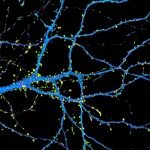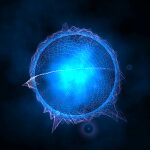Link to Pubmed [PMID] – 31110290
Link to HAL – pasteur-02344329
Link to DOI – 10.1038/s41551-019-0396-1
Nat Biomed Eng 2019 Nov; 3(11): 930-942
Preclinical studies of psychiatric disorders use animal models to investigate the impact of environmental factors or genetic mutations on complex traits such as decision-making and social interactions. Here, we introduce a method for the real-time analysis of the behaviour of mice housed in groups of up to four over several days and in enriched environments. The method combines computer vision through a depth-sensing infrared camera, machine learning for animal and posture identification, and radio-frequency identification to monitor the quality of mouse tracking. It tracks multiple mice accurately, extracts a list of behavioural traits of both individuals and the groups of mice, and provides a phenotypic profile for each animal. We used the method to study the impact of Shank2 and Shank3 gene mutations-mutations that are associated with autism-on mouse behaviour. Characterization and integration of data from the behavioural profiles of Shank2 and Shank3 mutant female mice revealed their distinctive activity levels and involvement in complex social interactions.






